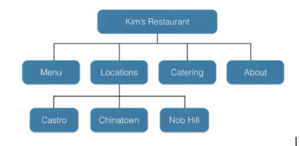Top 4 Digital Marketing Trends For 2021
Many businesses have completely altered the way they operate in 2020. More and more products and services move online and many employees will continue to work remotely or in a hybrid setting for much of next year. What are the most relevant digital marketing trends for 2021 that your business should keep in mind to build customer loyalty and generate more traffic, leads, and revenue? Check out the top 4 areas Onimod Global experts recommend to invest your time and resources into next year. If you’re not sure where to begin, this list is the perfect starting point.
Businesses must embrace the digital transformation
The post-COVID world we will hopefully experience in 2021 will make a digital presence for companies almost mandatory. “Digital transformation” has become a popular buzzword since March 2020, and all types of companies are investing heavily in the migration to digital platforms. This includes platforms such as e-commerce, chatbots, email, apps, artificial intelligence, predictive analytics, omnichannel marketing and augmented and virtual reality.
Google listings and local SEO will be a top priority for small businesses
If you own a small business, one of the most important things you can do is ensure your local listings are verified and kept current on various search platforms. For B2C businesses that draw in primarily local traffic, the Google My Business listing provides valuable information about your hours and whether or not they are affectd by COVID, services, and geographical location. It’s one of the key factors in search and business owners are often blown away to learn how many directories there are out there.
One tip you can easily implement today: make sure that you have a geographically-defined service area in your local listings. Doing this will help your business show up in “near me” searches. That’s because Google and other search engines will prioritize relevance in their search algorithms.
Voice search and its power
Voice search queries will often populate different results than if the user had typed in a text-based search. Even though voice search is not a part of Google’s algorithm, it still dictates current search results. This means that businesses should be up to date on voice search components for their consumers who are adapting and switching over to that medium.
Content must be specifically optimized for voice searches, according to experts in voice search. The content needs to be more direct and conversational, and by doing so it will accurately sync with search queries. This will help boost traffic by staying relevant and more visible to consumers.
Influencer marketing a key pillar of marketing for consumer brands
Consumer brands have historically used social media influencers to present authentic unbiased advertising to appeal to prospects and customers. The pandemic amplified the impact influencers have on the purchase of products, due to a limited ability to shop at stores and increased online shopping traffic.
A recent study found that 40% of people reported that they purchased a product online after seeing it used by an influencer on YouTube, Instagram or Twitter. Influencers and their impact are expected to gain even more popularity and followers and businesses to use influencers more than ever before.
More from Onimod Global
Onimod Global is looking forward to the future and helping your business reach your full digital potential. Interested in growing your digital presence for your company? Reach out to us here!
Onimod Global releases the latest digital marketing news and essential marketing tips every Tuesday and Thursday! To catch up on the top digital marketing news and trends, click here. To find out more about who we are and what we do, click here.



